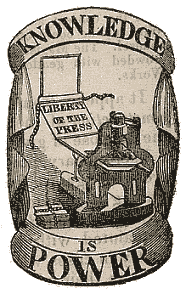


Government’s view of the economy could be summed up in a few short phrases: If it moves, tax it. If it keeps moving, regulate it. And if it stops moving, subsidize it.” —Ronald Reagan
The academics and Liberal historians are still lying about the Great "New Deal" that President Franklin Roosevelt used to attempt to stem the tide of Depression in the time between 1930 and 1933.
The Keynesian approach to reversing the economic downward spiral was to spend millions on a series of economic programs he initiated between 1933 and 1936 with the goals of giving work (relief) to the unemployed, reform of business and financial practices, and recovery of the economy during The Great Depression.
The "First New Deal" of 1933 was aimed at short-term recovery programs for all groups which were called the '[Alphabet Agencies]'. The Roosevelt administration promoted or implemented banking reform laws, emergency relief programs, work relief programs, agricultural programs, and industrial reform (the NRA), a federal welfare state, as well as the end of the gold standard and prohibition.Source" Wikapedia
A "Second New Deal" (1935–36) included labor union support, the WPA relief program, the Social Security Act, and programs to aid farmers, including tenant farmers and migrant workers. The Supreme Court ruled several programs unconstitutional; however, most were soon replaced, with the exception of the NRA. In practice the New Deal ended with World War II. As Roosevelt himself said in December, 1943, "Dr. New Deal" had given way to "Dr. Win the War."
Most of the relief programs were shut down during World War II by the Conservative Coalition (i.e. the opponents of the New Deal in Congress). Many regulations were ended during the wave of deregulation in the late 1970s and early 1980s. Several New Deal programs remain active, with some still operating under the original names, including the Federal Deposit Insurance Corporation (FDIC), the Federal Housing Administration (FHA), and we know how well they have fared in recent months!
The New Deal represented a significant shift in political and domestic policy in the U.S., with its more lasting changes being increased federal government control over the economy and money supply, intervention to control prices and agricultural production. This was the beginning of complex social programs and wider acceptance of trade unions. The effects of the New Deal still remain a source of controversy and debate among economists and historians.
The largest programs still in existence today are the Social Security System and Securities and Exchange Commission (SEC).And now comes the "New ,New Deal" of president elect Obama, and it will chug into Washington DC on a train. With the 44th president to be and his Delaware VP and an assortment of family and confidants who expect the Obama "Change" to save America's economy and status on the World stage!
Obama brings with him a promise to save the economy, although he says "it is more severe than he originally thought it was, and probably cannot be fixed in a year or even one four year term".His plan includes a trillion dollar price tag as estimated by those who deal daily in numbers and federal spending, predict.
President-elect Barack Obama took center stage in the economic crisis for the third day in a row Sunday as he sent out aides to pitch his rapidly expanding stimulus plan on TV and announced plans to introduce his economic team Monday.
Appearing on the Sunday talk shows, his advisers indicated that the ambitious plan he announced Saturday to create 2.5 million public-works and alternative-energy jobs will be far more costly than previously discussed. Along with other possible steps to turn the economy around, it could cost the government as much as $700 billion.
That would be four times the size of the $175 billion stimulus package that Obama promoted as a presidential candidate.
Not unlike Roosevelt, Obama is using scare tactics to advance his "welfare state" agenda,as illustrated by this statement; "This is as big of an economic crisis as we've faced in 75 years, and we've got to do something that's up to the task of confronting that,'' Goolsbee said.
Obama's aides also did not dispute a New York Times report that fear of worsening the economy might lead him to postpone advancing a centerpiece of his campaign -- a tax increase for people earning more than $250,000 a year.
Whether by design or necessity, Obama appeared to be using the deepening economic crisis to step to the forefront and seize the stage in order to reassure a nervous nation two months before he takes office.
The only problem with their crisis argument is that in 1933, 4000 banks had failed and the unemployment rate hovered around 25%! And despite all the money spent by Roosevelt in the New Deal. The Country fell into a Recession again in 1937 during
FDR's second term. In the fall of 1937 the economy fell into recession that continued through most of 1938. Production declined sharply, as did profits and employment. Unemployment jumped from 14.3% in 1937 to 19.0% in 1938. Keynesian economists speculated that this was a result of a premature effort to curb government spending and balance the budget, while conservatives said it was caused by attacks on business and by the huge strikes caused by the organizing activities of the CIO and the American Federation of Labor (AFL).( Does this sound strangely like an echo from the past in today's political rhetoric!
Fear has been used by many power happy despots in the recent twentieth century. Let us not be stampeded into the Socialist State by fear tactics that are based not upon facts but bizarre predictions! The economy is bad but do the math! It has not been 75 years since we had 19% unemployment in 1938!








No comments:
Post a Comment